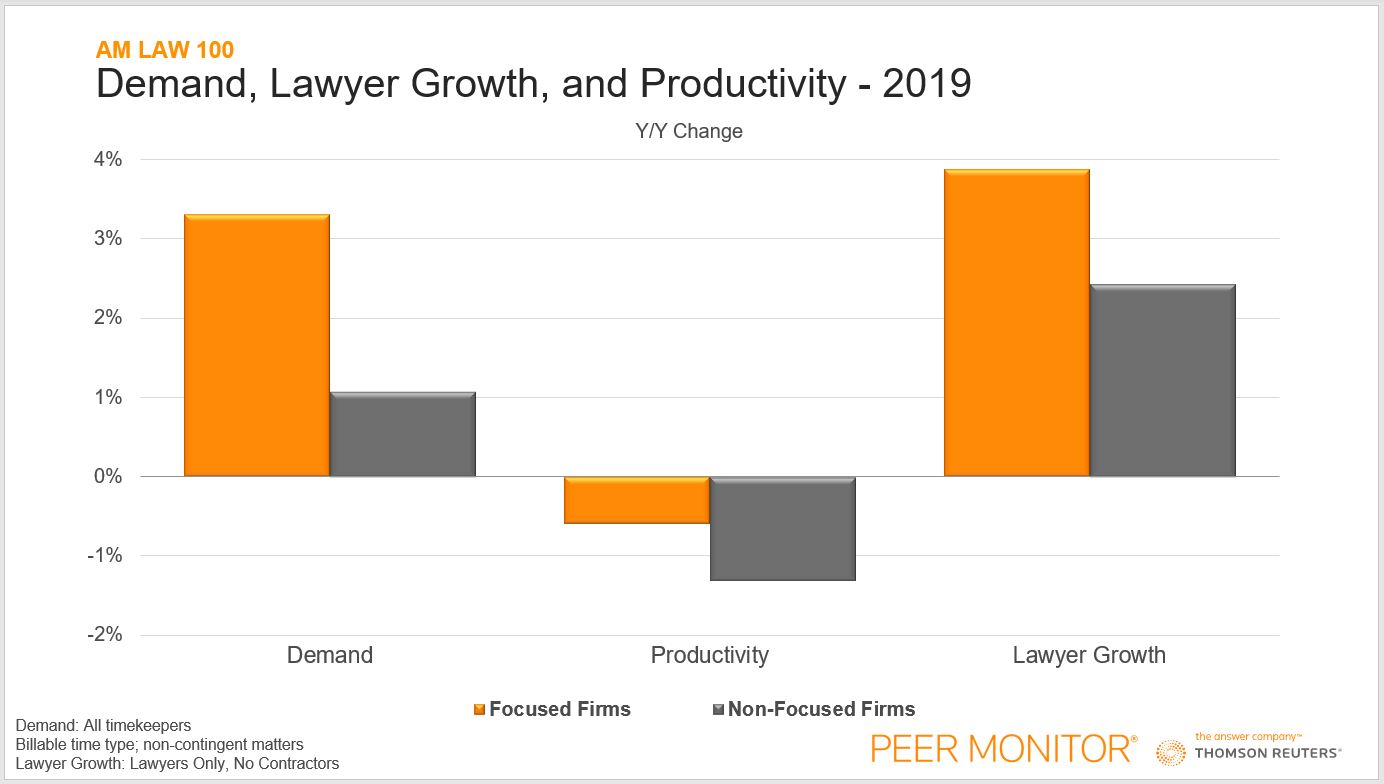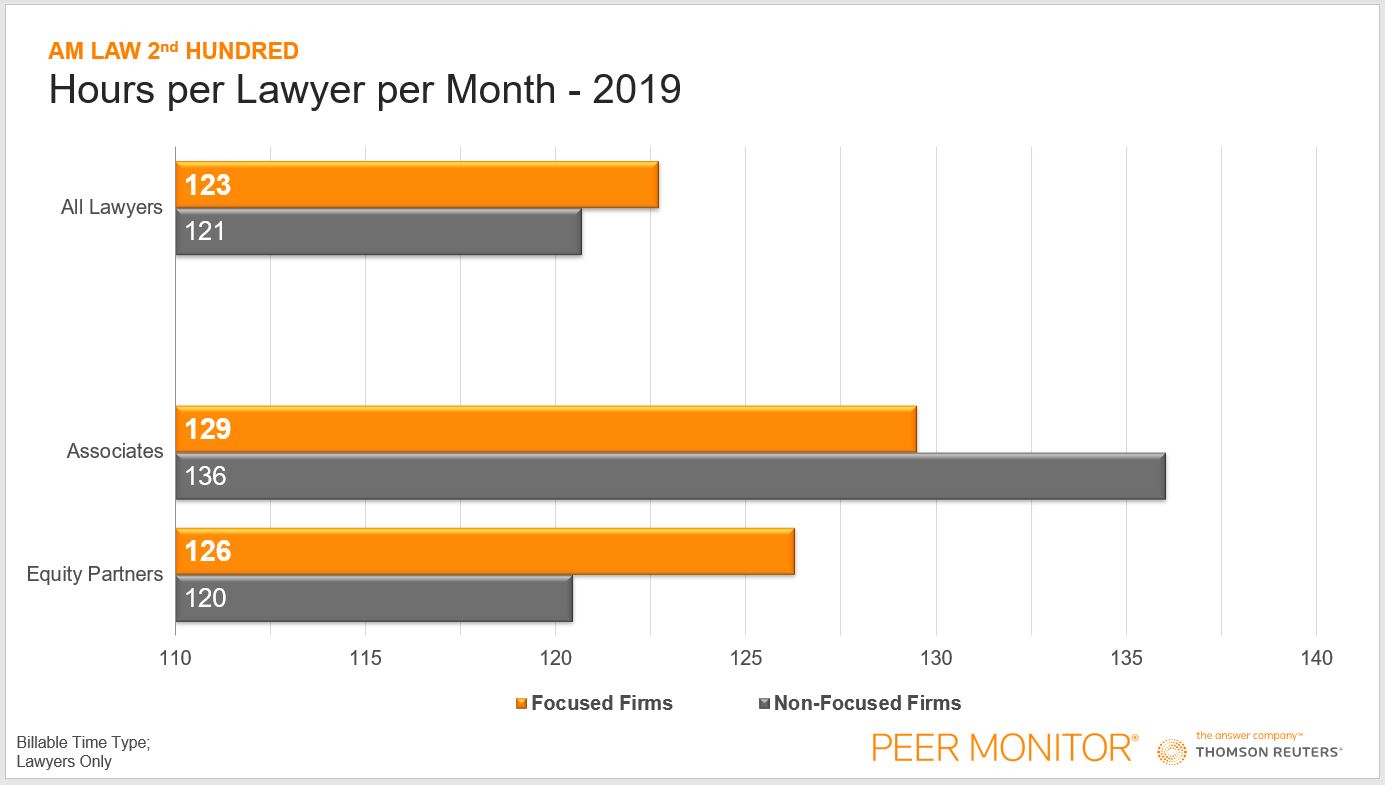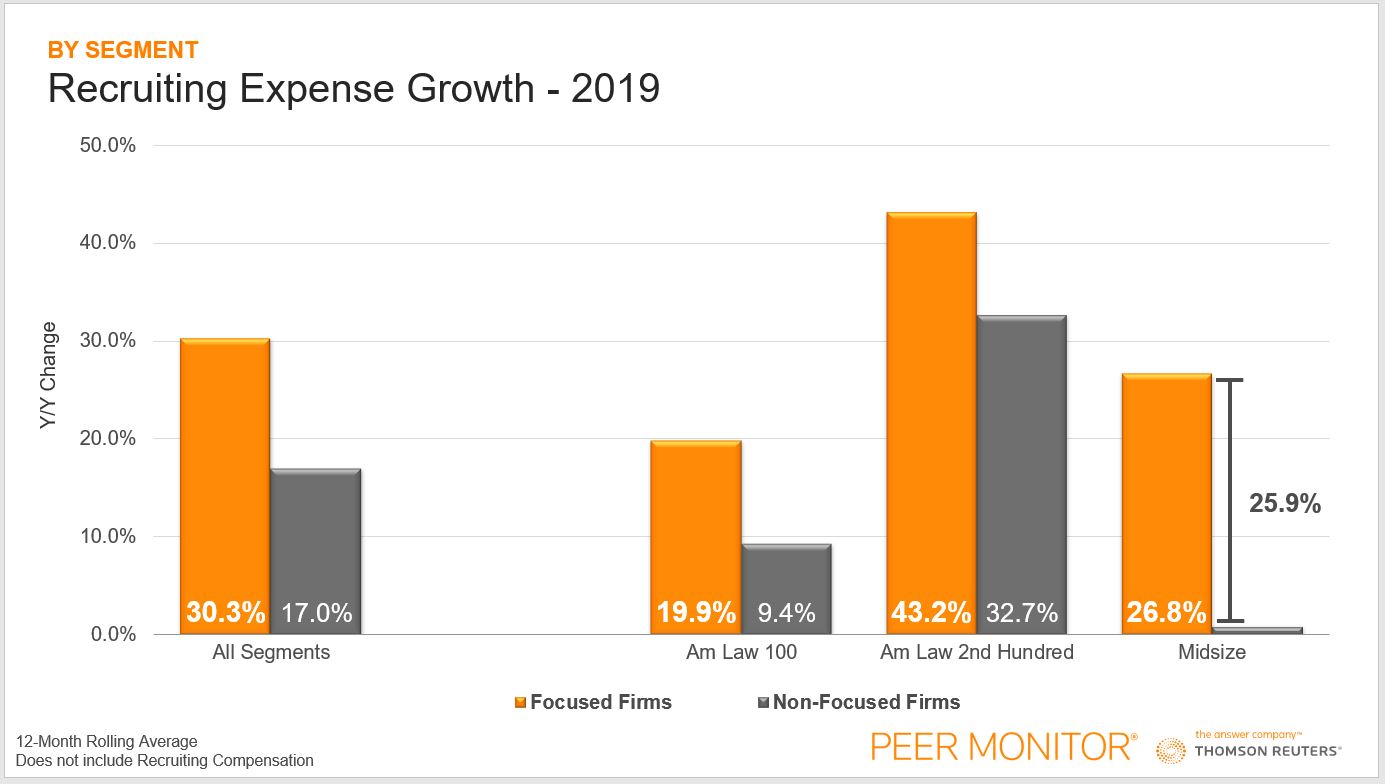As our series Focused Firms comes to an end, we reflect on the performance of these firms within each law firm size segment and how they differ from others
In the previous three editions of this series we have so far established that i) what we have identified as a set of Focused Firms among our Peer Monitor firms enjoyed higher demand growth in 2019; ii) they completed that increased volume of work more efficiently based on hours worked per lawyer; and iii) they are increasing their revenue and profit per equity partner at a significantly greater pace.
As we draw this series to an end, we will reflect on the performance differences of Focused Firms within each size segment.
Am Law 100
While only a small proportion of firms in the Am Law 100 segment fall into the Focused Firms category, their demand performance truly shines when compared with the rest of the segment. Focused Firms in the Am Law 100 had average demand growth of 3.3% in 2019, more than two percentage points greater than non-Focused Firms within the segment.
As demand has rapidly grown among our Focused Firms within the Am Law 100 segment, as has the need for additional lawyers. Focused Am Law 100 firms averaged 3.9% growth in their lawyer headcount in the past year alone, signifying that these firms don’t anticipate work to slow down anytime soon. Finally, due to the level of demand relative to headcount, our Focused Am Law 100 firms had less of a slow-down in their productivity levels relative to the non-focused group.

Am Law 2nd Hundred
As we discussed in the second installment of the series, our Focused Firms were on average more efficient than their non-focused counterparts. However, this was not the case uniformly across all lawyer titles. For instance, among Litigation-focused law firms, while associates had lower average hours worked per month, equity partners worked 7 hours more per month on average. On the whole, this trend is extremely evident among Focused Firms in the Am Law 2nd Hundred.
Across all practices, lawyers at the average Focused Firm worked 123 billable hours in a month, two hours more than in the rest of the segment. However, once again associates were less productive, and equity partners were more. At a Focused Firm, while the average associate worked seven hours less, an equity partner clocked an additional six hours more per month than at a law firm with more diversified offerings.
In terms of revenue gained — due to the significant advantage in dollar value of each hour worked by an equity partner relative to that of an associate —Focused Firms are more than happy to take that trade-off any day of the week, as evidenced by revenue growth that was 7.9% last year, significantly higher than their non-focused counterparts at 4.3%.

Midsize Firms
Midsize law firms made up the largest proportion of firms that fell into the Focused Firm category in 2019. And as Focused Firms in all three segments had higher levels of hiring, none have had to increase the amount of expenditure in pursuit of talent relative to the rest of their segment as much as Midsize firms have.
Recruiting expenses are skyrocketing across the market and growth levels are higher in each segment for our Focused Firms relative to non-focused firms. While growth in recruiting expenses overall is highest in the Am Law 2nd Hundred, the disparity between the two groups is largest in the Midsize segment. Focused Midsize firms have recruiting expense growth that is 25.9% higher than their non-focused counterparts, illustrating the value Focused Firms within the Midsize segment place on top-level talent that have industry specific knowledge and skill sets, relative to all other firms within the segment.

In Conclusion
It is clear after our review that in 2019, law firms that took a more focused approach — in this case meaning having completed at least 50% of their work in one practice area — reaped benefits not afforded to firms with more diversified offerings.
Focused Firms had higher demand growth, better efficiency, and faster growth in revenue, revenue per lawyer, and profit per equity partner than did non-focused firms. The 2019 results showed that clients are more likely to take their work to a firm that presents itself as a master of a single specialty, as opposed to a jack-of-all-trades.
While it is tempting to try and compete for work in every field available, at the end of the day this may come at the expense of a both a law firm’s top and bottom line.






